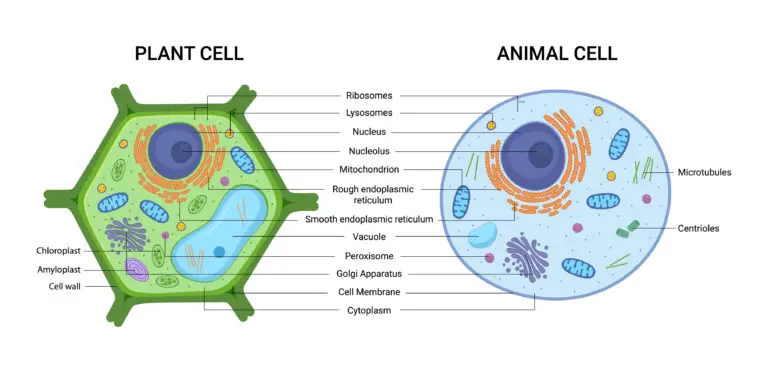Cell

Table of Contents
What is a Cell in Biology?
A cell is the basic structural and functional unit of all living organisms.
Cells are the smallest units of life that can perform all the necessary functions for an organism to survive and thrive. Each cell is enclosed by a cell membrane, which separates it from its external environment.
Inside the cell, various organelles, including the nucleus, mitochondria, endoplasmic reticulum, and others, work together to carry out essential life processes such as metabolism, growth, and reproduction.
Cells can be categorized into two main types: prokaryotic cells, which lack a true nucleus and membrane-bound organelles, and eukaryotic cells, which have a nucleus and membrane-bound organelles.
Basic Structures of a Cell
Cell Membrane
The cell membrane, also known as the plasma membrane, is a crucial component of a cell that serves as its outer boundary. It acts as a selective barrier, separating the internal environment of the cell from the external surroundings.
The cell membrane is primarily composed of a phospholipid bilayer, which consists of two layers of lipid molecules with hydrophobic tails oriented inward and hydrophilic heads facing outward.
The five main functions of the cell membrane are: Selective Permeability, Transport, Cell Recognition, Structural Support, and Protection
Cytoplasm
Cytoplasm is the gel-like, semi-fluid substance that fills the interior of a cell, surrounding cellular structures and organelles. It is a key component of the cell’s structure and is crucial in various cellular processes.
The cytoplasm consists of water, ions, proteins, and other molecules that support cell organelles and allow for essential biochemical reactions to take place.
The cytoplasm ensures that cellular processes occur in an organized and regulated manner, contributing to the cell’s ability to maintain life and carry out its functions.
Nucleus
The nucleus is a membrane-bound organelle found in eukaryotic cells, and it serves as the control center or the “brain” of the cell.
It is one of the most prominent and essential organelles within a cell. The nucleus contains the genetic material, which is organized into structures called chromosomes, and it plays a crucial role in regulating cellular activities.
Eukaryotic Cells:
- Characteristics:
- The presence of a true nucleus, which houses the genetic material (DNA) in the form of chromosomes.
- Membrane-bound organelles, including the endoplasmic reticulum, Golgi apparatus, mitochondria, chloroplasts (in plant cells), and others.
- Larger and more complex structure.
- Found in plants, animals, fungi, and protists.
- Characteristics:
Prokaryotic Cells:
- Characteristics:
- A true nucleus is absent; the genetic material is found in a nucleoid region.
- Lack of membrane-bound organelles, except for ribosomes.
- Generally smaller and simpler in structure.
- Found in bacteria and archaea.
- Characteristics:
The nucleus maintains the integrity of genetic information, controls cellular activities, and facilitates processes essential for cell growth, development, and reproduction.
Organelles
Organelles are specialized structures within eukaryotic cells that perform specific functions necessary for the cell’s survival, growth, and functioning.
Eukaryotic cells are characterized by having a defined nucleus enclosed in a membrane, and within the cell, various organelles are present, each with its unique role.
Major Organelles in Eukaryotic Cells
- Nucleus
- Mitochondria
- Endoplasmic Reticulum (ER)
- Golgi Apparatus
- Ribosomes
- Lysosomes
- Vacuoles
- Cytoplasm
- Cytoskeleton
- Centrioles (in animal cells)
Related Links
What is an Cytoplasm?
What are Organisms?
What is an Organelle?
What is a Nucleus?